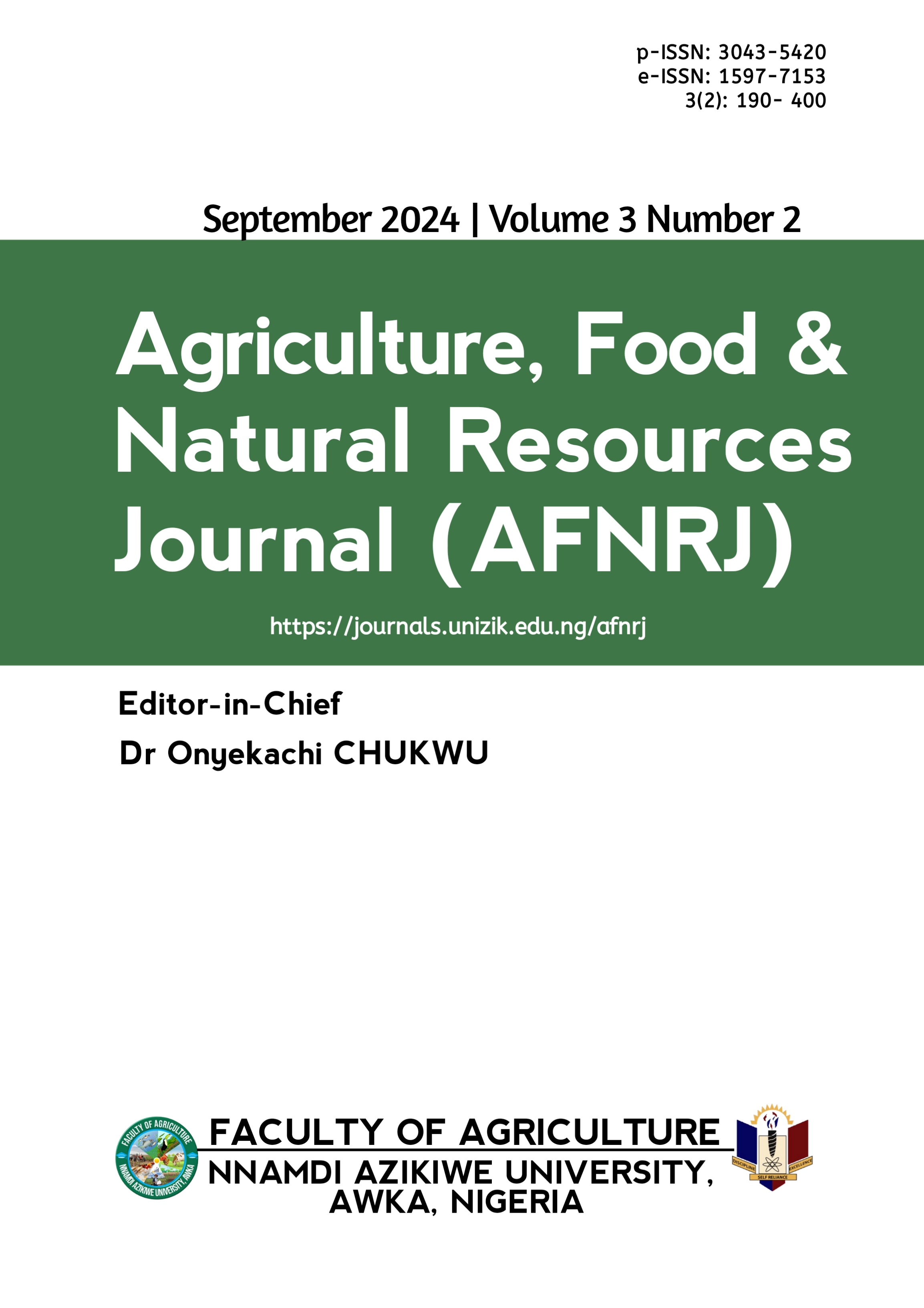Chemical composition and sensory characteristics of cookies produced from wheat and African yam bean flours
DOI:
https://doi.org/10.5281/zenodo.14179858Keywords:
African Yam Bean Flour, Composite Cookies, Mineral Elements, Nutrition, ProximateAbstract
This study was conducted to evaluate the nutritional quality of composite cookies produced from blends of wheat and African yam bean flours. The proportion of wheat and African yam bean flours was varied to obtain five (5) samples, which include 100:0, 90:10, 80:20, 70:30, and 60:40%, respectively. The proximate and mineral composition of the cookies were determined using standard methods. The sensory characteristics of the composite cookies were also determined. The proximate composition of the composite flour showed that the moisture content, crude protein, crude fat, crude fibre, total ash, and carbohydrate ranged from 1.33-3.50%, 6.44 to 13.56%, 8.33 to 14.33%, 0.42-0.88%, 1.32-2.77% and 71.37-81.38%, respectively. The mineral elements of the composite cookies significantly (p < 0.05) increased with an increase in African yam bean flour inclusion. The sensory attributes such as colour, appearance, aroma, taste, crispiness, and overall acceptability of cookies were rated high between like moderately and like extremely with the control sample being rated as the best sample, followed closely by the sample with 10 and 30% African yam bean flour, respectively. Conclusively, the present study showed that substitution of wheat flour with African yam bean flour in cookie production significantly (p < 0.05) increased the total ash, crude fibre, crude fat, protein contents, and mineral elements of the composite cookies. The production of acceptable cookies by substituting wheat flour with African yam bean can therefore be harnessed because of its contribution to the nutritional properties of the cookies produced
Downloads
Published
Issue
Section
License
Copyright (c) 2024 Oladotun Olakanmi OGUNTOYINBO, Iniobong Gloria UDOH, Isaiah Babatunde ADEYEMI

This work is licensed under a Creative Commons Attribution 4.0 International License.
which permits unrestricted use, distribution, and reproduction in any medium, provided the original author and source are credited.
Authors retain the copyright of their published work in the AFNRJ.





